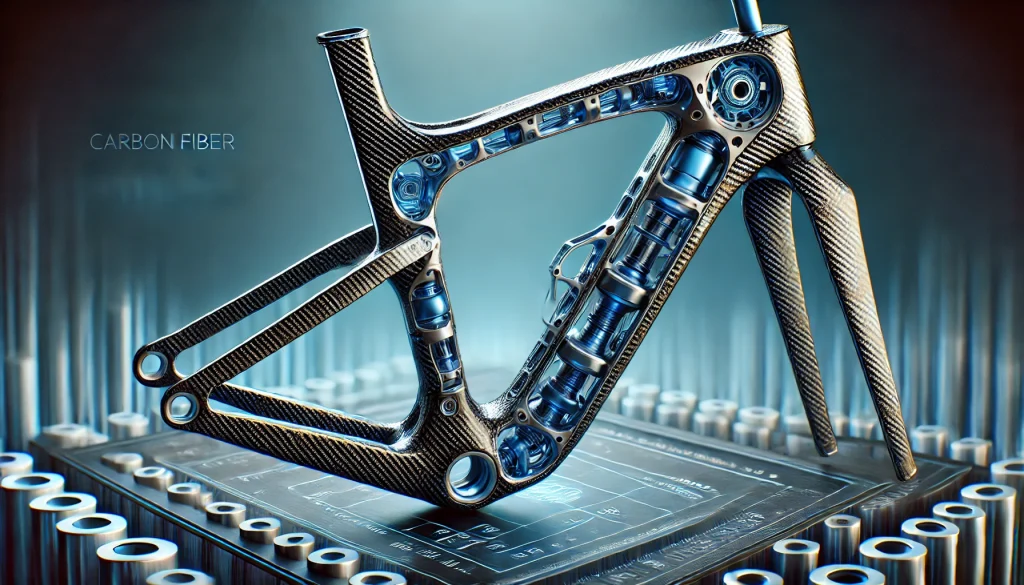
Overview
In the ever-evolving landscape of materials science, Carbon Fiber Reinforced Polymer (CFRP) stands out as a key player. Known for its exceptional strength-to-weight ratio, durability, and resistance to environmental factors, CFRP has revolutionized industries ranging from aerospace to construction. As we step into October 2024, breakthroughs in CFRP technology promise to further its impact, opening new avenues for innovation and application. With an increasing demand for sustainable, high-performance materials, carbon fiber is finding its way into the heart of some of the most cutting-edge technological advancements. This post explores recent developments, emerging applications, and the potential of CFRP in reshaping industries.
Importance and Relevance of Carbon Fiber Reinforced Polymer
CFRP has been the material of choice in industries where performance, lightweight characteristics, and durability are paramount. Whether in aerospace, automotive, or construction, CFRP’s unique properties allow for the creation of strong yet lightweight structures. Its growing significance is a response to increasing market demands for materials that can withstand extreme conditions while reducing overall weight and, consequently, fuel consumption or energy use.
The environmental benefits of CFRP are becoming increasingly clear. As industries pursue greener solutions, the recyclability and potential for reuse of carbon fiber composites offer significant advantages over traditional materials like steel or aluminum. In the wind energy sector, CFRP’s use in turbine blades results in more durable and efficient energy systems, supporting the broader sustainability movement. By enhancing the lifespan and performance of renewable energy technologies, CFRP contributes to reducing environmental impact while aligning with global goals for cleaner, more sustainable energy production.
Recent Breakthroughs in Carbon Fiber Reinforced Polymer (CFRP) Technology

Recent developments in CFRP technology continue to push boundaries. A major breakthrough in October 2024 involves advancements in automated manufacturing, set to significantly lower the cost of CFRP production. Historically, high manufacturing costs limited CFRP’s widespread adoption, particularly in cost-sensitive industries like automotive. However, new techniques, such as automated fiber placement (AFP), have made producing large, complex CFRP parts more efficient, driving down costs.
Additionally, researchers have developed nano-reinforced CFRP, incorporating nanoparticles into the polymer matrix. This enhances the material’s toughness, making it more resistant to impact and fatigue damage. The integration of graphene into carbon fiber structures is also gaining traction, improving electrical conductivity and thermal properties, significantly boosting CFRP’s functionality in electronics and energy storage applications.
Emerging Applications of CFRP
The use of CFRP has expanded into emerging industries like urban mobility and infrastructure. Lightweight electric vehicles (EVs) benefit from CFRP’s reduced mass and improved energy efficiency, leading to longer driving ranges and reduced battery consumption. In public transportation, CFRP is increasingly used in high-speed rail, reducing train carriage weight while maintaining strength and safety.
In construction, CFRP is crucial for structural strengthening and retrofitting aging infrastructure. Bridges, skyscrapers, and historic buildings now rely on CFRP for reinforcement, extending their lifespan without costly rebuilds. Its corrosion resistance makes it ideal for structures in harsh environments like marine or coastal areas.
Another emerging field for CFRP is biomedical devices, where its lightweight, strength, and biocompatibility make it perfect for prosthetics, orthotic devices, and even surgical instruments.
Integration with Other Technologies

One of the most exciting aspects of CFRP is its integration with advanced technologies. The material is increasingly paired with smart sensors and IoT devices, enabling real-time monitoring of structural health in bridges, aircraft, and critical infrastructure. These smart composites can detect structural fatigue, cracks, or damage, allowing preventive maintenance and reducing the risk of failure.
CFRP is also advancing in energy storage solutions. Researchers are exploring its use in supercapacitors and batteries due to its conductivity and energy storage potential. This integration could lead to lightweight, high-energy storage systems crucial for electric vehicles and renewable energy.
User Experience Improvements
CFRP enhances user experiences, especially in automotive and aerospace industries. Vehicles with CFRP components offer improved handling due to reduced weight, while better fuel efficiency supports a greener footprint. In aerospace, CFRP makes aircraft lighter, lowering fuel costs and extending flight range, benefiting both airlines and passengers.
From a consumer standpoint, CFRP products are seen as premium due to their performance and durability. Whether it’s a bicycle frame, tennis racket, or high-end electronics, CFRP provides superior performance, durability, and sleek design, significantly enhancing the overall user experience.
Challenges Facing Carbon Fiber Reinforced Polymer (CFRP)
Despite the many advantages, there are still significant challenges associated with the use of CFRP. The high cost of production remains a major hurdle, although advancements in automation and manufacturing processes are helping to address this issue. Additionally, the recycling of CFRP is not as straightforward as recycling metals or plastics. While strides are being made in developing recycling techniques, such as thermal decomposition or chemical recycling, these processes are still in their infancy and require further development before they can be widely adopted.
Moreover, the environmental impact of carbon fiber production, particularly the energy-intensive nature of the process, is a concern. Although CFRP can contribute to greener solutions in the long run, efforts to reduce the carbon footprint of its production are ongoing.
Lastly, the material’s brittleness can pose challenges in certain applications where impact resistance is critical. While improvements such as nano-reinforcement are helping to mitigate these issues, more research is needed to overcome these limitations fully.
Conclusion
As of October 2024, Carbon Fiber Reinforced Polymer (CFRP) remains at the forefront of material innovation. Its lightweight strength, corrosion resistance, and adaptability make it essential across many industries. Recent manufacturing breakthroughs and smart technology integration drive wider adoption, while challenges like cost and recyclability are being addressed.
For both businesses and consumers, CFRP’s benefits in transportation, construction, and everyday products highlight its potential to shape future technology. Staying updated on CFRP advancements will be crucial for leveraging its full potential.
FAQs
What is Carbon Fiber Reinforced Polymer used for?
CFRP is used in industries like aerospace, automotive, and construction for its strength-to-weight ratio, durability, and corrosion resistance.
What are the challenges of using CFRP?
Challenges include the high cost of production, limited recycling methods, and the brittleness of the material in certain applications.
How is CFRP improving user experiences?
CFRP enhances user experience by providing lighter, stronger, and more durable products, such as electric vehicles, aircraft, and high-end sports equipment.
Resources
- ResearchGate. Applications and Future Trends of Carbon Fiber Reinforced Polymer Composites: A Review.
- CRP Technology. Carbon Fiber Reinforced Polymer (CFRP) Guide.
- Advances in Engineering. Advancements in Carbon Fiber Reinforced Polymer Matrix Composites: History, Applications, and Future Innovations.
- Fibrwrap Construction. What is Carbon Fibre Reinforced Polymer (CFRP)? A Guide to Structural Strengthening and Repairs.
- MDPI. Carbon Fiber Reinforced Polymer (CFRP) in Building Applications.
